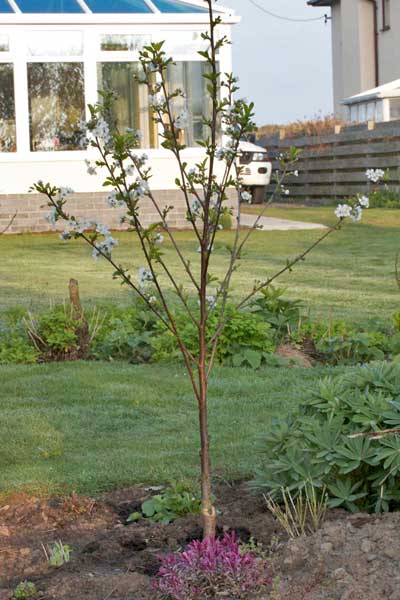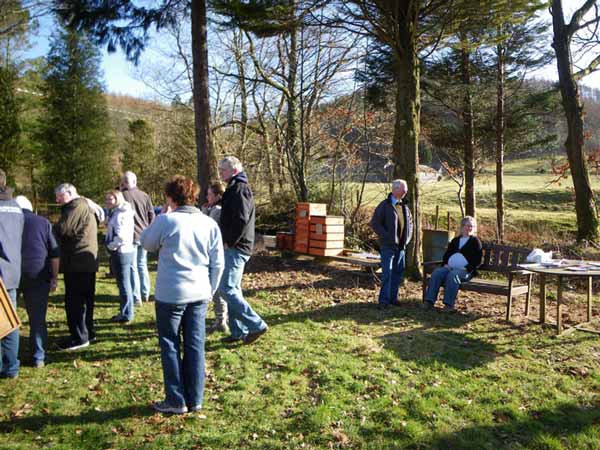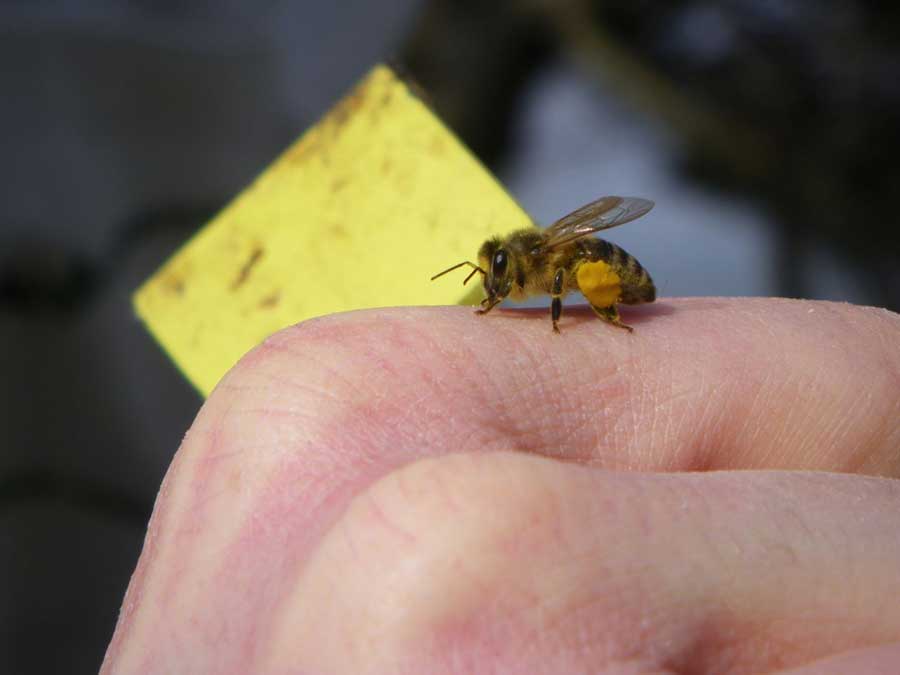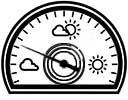Queen Bee Selection – Do the Bees Know Best?
I’ve been thinking recently about queen selection within the honey bee colony.
Ideally, if we are selecting a queen to rule a strong, healthy, productive colony we want one with characteristics such as high fecundity, disease resistance, longevity and one that raises bees with a good temperament. The perceived wisdom when re-queening following an artificial swarm, a supersedure or even dare I say it after culling a queen as we did recently is to destroy all but one or two of the best looking queen cells. Most beekeepers would suggest that the best looking queen cells are those that are the largest, are positioned well at the bottom of the frame, are uniform and nicely dimpled and have a good provision of royal jelly. The WBKA ‘Making Increase‘ booklet states:
“Alternatively, the cells may be left undisturbed, or better still, destroyed except for one good unsealed cell chosen because it is well provisioned with royal jelly and in a position where chilling is unlikely to occur”
I’ve never really understood quite why we do this and to me it seems to have a number of problems associated with it.
1: Which Queen Cell is Best?
The most obvious of these is that we as humans are artificially selecting a queen for the colony based on the physical dimensions and overall aesthetics of the queen cell in which she will be raised. I’m sure that in a blind test if humans were shown several different queen bees and asked to select which one had performed best, then our powers of judgement based on aesthetics would be useless. Queen bees that ‘look better’ in our eyes don’t necessarily perform better and therefore picking queens based purely on the visual characteristics of the queen cells in which they will be raised seems like a pointless exercise. I don’t what to anthropomorphise bees, but I’m sure you’ll agree that better looking humans don’t necessarily perform better, so why should better looking bees!
I’m beginning to think that choosing queen bees based on the queen cells that we think ‘look best’ is worse than a random approach. By selecting the ‘best- looking’ queen cells we are interfering with natural selection and making a choice based on certain criteria. Whilst it’s possible that these criteria may select for better performing queens, the converse may also be true – the criteria that we think are ‘better looking’ may be selecting for queen bees that perform poorly. If we are going to select at all maybe a random approach would be better?
2: Is Bigger Better?
As noted above one of the criteria that a beekeeper would use to choose a queen cell is the size of that cell. Size seems like a fairly arbitrary criterion to choose the ‘best’ queen for the colony. I don’t even know if there is evidence to prove that a larger queen cell actually produces a larger queen, but even if it does, there certainly isn’t any evidence that a larger queen is better. If bigger were indeed better in the world of queen bees then over the generations natural selection would have meant that queen bees would all be the size of locusts, or maybe larger still. Clearly that isn’t the case, so there must be other factors at work. I’m not going to postulate what these factors could be as there will be thousands of them, but a few that spring to mind would be things such as:
- Larger queen bees are presumably more susceptible to predation whilst on mating flights
- Larger queen bees require more resources to sustain them
- Larger queen bees may not physically be able to fit their abdomens into brood cells to lay eggs
and on it goes
Clearly, if natural selection is to be believed, then the best performing queen bees are those that are ‘about the size of a queen bee’. Bigger isn’t necessarily better, so why should we choose queen bees based on their size?
3. What do we Know?
In essence this all boils down to the fact that we simply don’t know if the physical, visual characteristics of a queen bee affect the performance of the colony and even if they do, we don’t know which characteristics to select for. It’s possible that experience could teach us which queen cells produce the better performing colonies but I don’t think we really know. Performing artificial selection based on characteristics that we know very little about strikes me as interfering blindly with very little knowledge of what we are doing.
Yes, it’s possible and advisable to practise artificial selection within beekeeping based on the performance of complete colonies. Selecting queens and breeding from colonies that have the characteristics we as beekeepers desire is indeed sensible, but even this is not without its caveats. Artificial selection for the characteristics we desire may in time narrow the gene pool of the species as a whole and eventually make it less resistant to new strains of pests and disease, so even here we need to be careful. We may not know enough about the overall requirements of the honey bee as a species to make judgements about what is best. Artificial selection is not without risks even when we know the colonies from which we are selecting have desirable characteristics. However, selecting queens and therefore colonies based on characteristics that may not necessarily be desirable is surely worse than a completely random selection process?
At the end of the day, what do we know? Maybe based on what little we do know, it is better to let the bees decide – they probably know better than we do.
4. Do we need to select at all?
There are several reasons given for selecting just one or two queen cells and destroying the others.
- It allows the bees to focus more energy and attention on one or two queen cells rather than a large number of them
- Fewer queen cells require less resources from the colony
- It reduces the chances of cast swarms
- It reduces the need and therefore perceived risks of queens fighting for supremacy
Again, I don’t know if there is any scientific or even anecdotal evidence to suggest that any of this is really true, and again even if such statements are true who are we to say that any of them are actually better for the bees? It seems sensible to assume that if left to their own devices the bees will ‘choose’ the best queen.
As stated above the bees are probably in a better position than us to choose which queen cells or which queens are the best. It’s likely that colonies that can create and sustain lots of queen cells will be stronger colonies and maybe this in itself is part of the natural selection process. It certainly doesn’t take much imagination to see how virgin queens fighting it out for supremacy within the hive is natural selection and survival of the fittest in its most raw, Darwinian form.
It therefore stands to reason and simple mathematics that colonies that have more queen cells and can raise the greatest number of virgin queens should end up with the best queens. With more to ‘choose’ from in the first place there will be more variation and therefore a better chance that one of those queens is a good performing queen. By destroying queen cells and leaving them with just one or two we are reducing the pool of variation upon which natural selection and survival of the fittest has to work with. If we interfere with this and leave a queenless colony with only one or possibly two queens to select from, the fate of the queen and therefore the colony is essentially determined before natural selection has chance to do anything about it.
Leave them Bee.
Destroying all but one or two queens cells in a queenless colony seems counterproductive to me. It leaves the bees themselves and the fundamental processes of natural selection and survival of the fittest little to work with. Instead we as beekeepers have sealed the fate of the colony based on the visual characteristics of the cell in which the queen is to be raised – visual characteristics that may or may not have any significance to the queen herself, her performance as a ruler of the colony, or to the success of the colony as a whole.
I’m beginning to think that maybe more queens cells is actually better, so maybe it is best to simply leave them be.. or should I say ‘leave them bee’?


















I know a few queens, I ask how the best are selected.
This was the gist of Wally’s talk last week. Makes sense to me too.
hello
In fact there are evidence that bigger queens are best : several studies show that larger queens have a bigger spermatheca and then store more sperm and can mated with MORE different drones than smaller queens. Other studies showed that colonies headed with queens mated with a higher variety of drones had more genetic diversity within its population, grew stronger and overwintered better than colonies headed with queens that mated with fewer drones.. so you can see that the looking for a well developped and heavy queen is not bad. If you look carefully in the colonies that are headed by naturaly reared queens (swarmng queen cells) you could probably see that they usually are much bigger than most of the commercially reared queens available on the market..